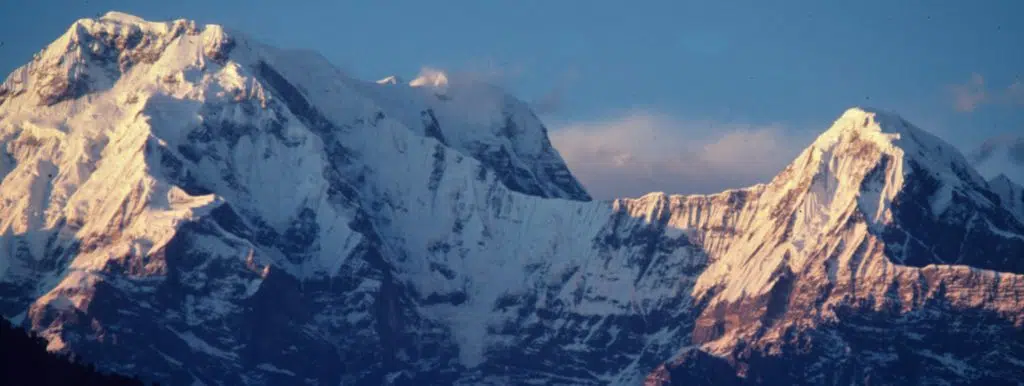Repository of Prosperity and Auspiciousness
The Himalaya play a central role in Vedic mythology, revered as gods and the home of the gods. Annapurna is the Hindu goddess of food, giver of alms, and queen of the holy city of Varanasi on the river Ganges.
The Annapurna range divides the geography, history, and culture of the region. It contains 14 peaks over 23,000 feet. The highest, Annapurna I, at 26,545 feet, and three other peaks, Annapurna II, III, and IV, are the core mountains that define the massif. The ridges stretch to all points of the compass and separate the arid plateau of Tibet from the northern plains of India. Water flowing from this drainage joins the Ganges River on its way to the Bay of Bengal.
The first ascent of Annapurna was in 1950 by a French expedition led by Maurice Herzog. His team of intrepid alpinists had come to scale Dhaulagiri, but when they arrived, they thought it impossible. They turned their attention to Annapurna. The maps were so bad it took almost a month of searching for them to even locate the peak. These strong men from the French Alps gave Annapurna their best and were lucky to survive.
The expedition confronted harsh conditions. Of course, the high altitude took its toll as well as did the bitter cold, raging storms, and avalanches. During his classic climb, Herzog lost his fingers and toes to frostbite. When they climbed to the summit of Annapurna, it was the highest mountain ever climbed and the first of the 8000 m peaks. At that time it was widely believed that 8000 m was a threshold above which humans will not be able to function efficiently, let also accomplish any technical climbing whatsoever. The successful ascent of Annapurna proved that 8000 m peaks could be climbed and provided renewed impetuous to the Everest expeditions. However it would be 3 years before the first ascent of Mt. Everest. Their achievement will live forever in the annals of mountaineering history. 
Herzog’s tale of courage ends with the line, “There are other Annapurnas in the lives of men.” Be it a personal challenge of the highest magnitude, or a seemingly insurmountable obstacle, this ascent remains as a metaphor for those who strive for what seems impossible. Indeed, we all have an Annapurna in our lives.

